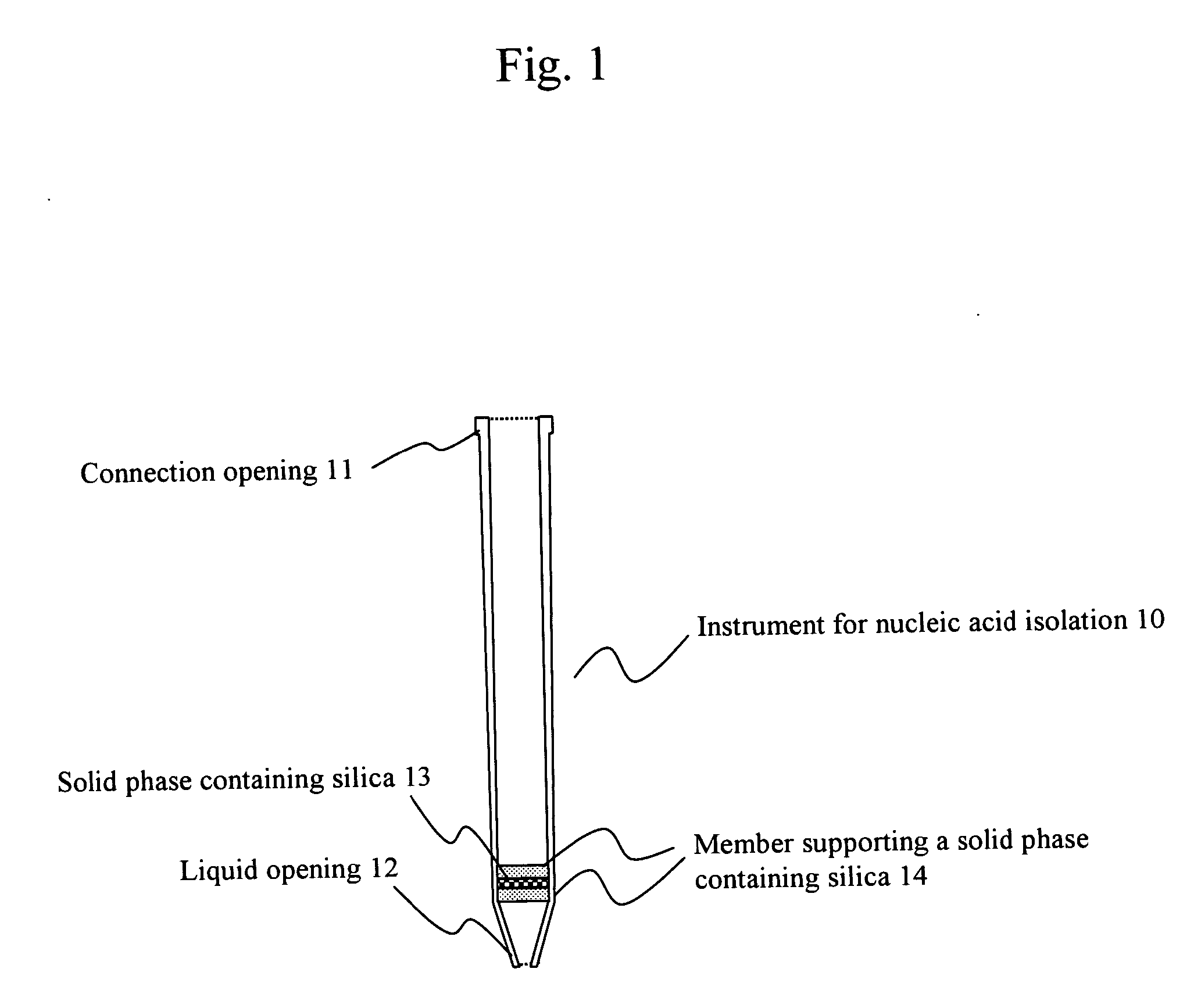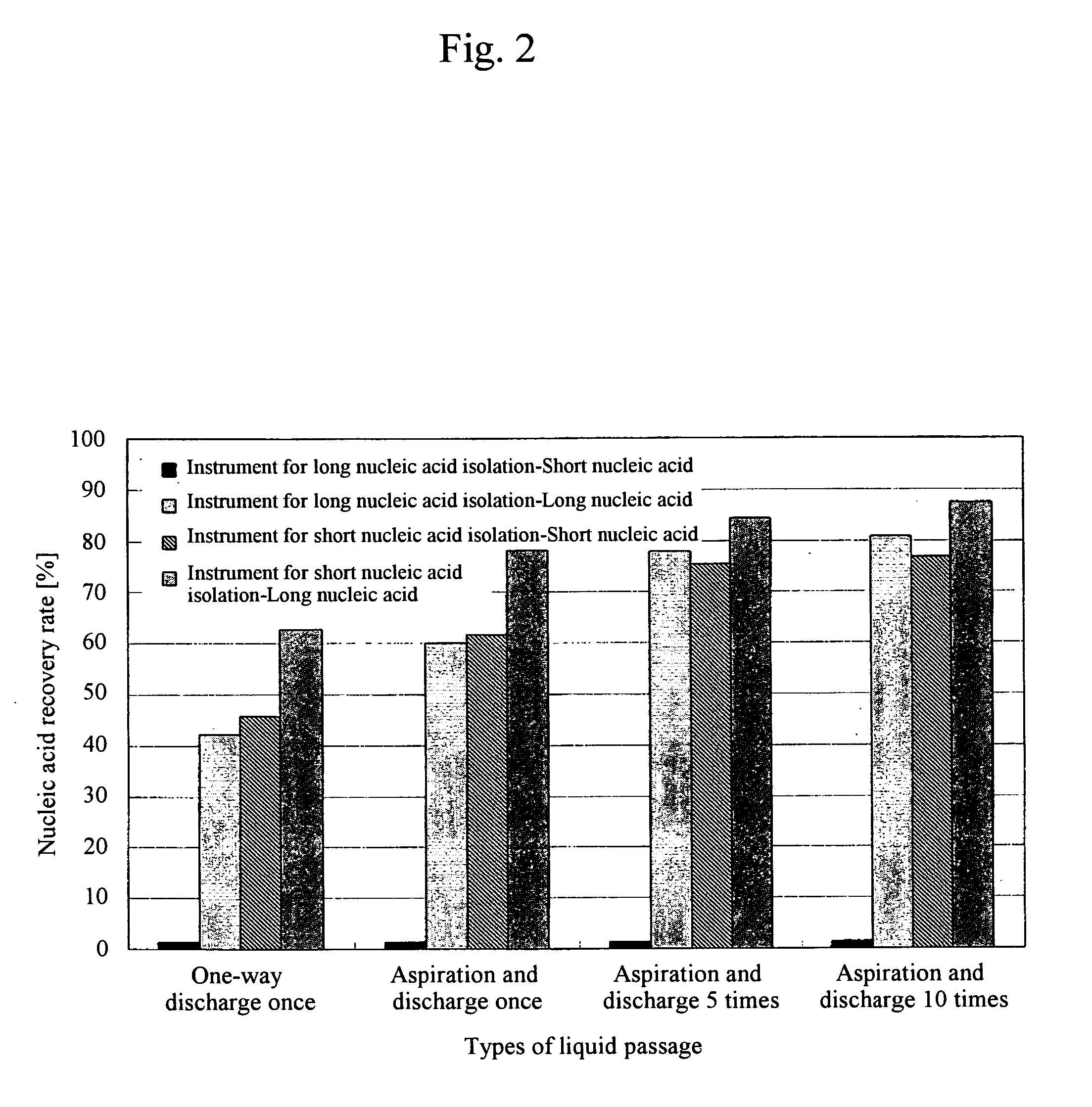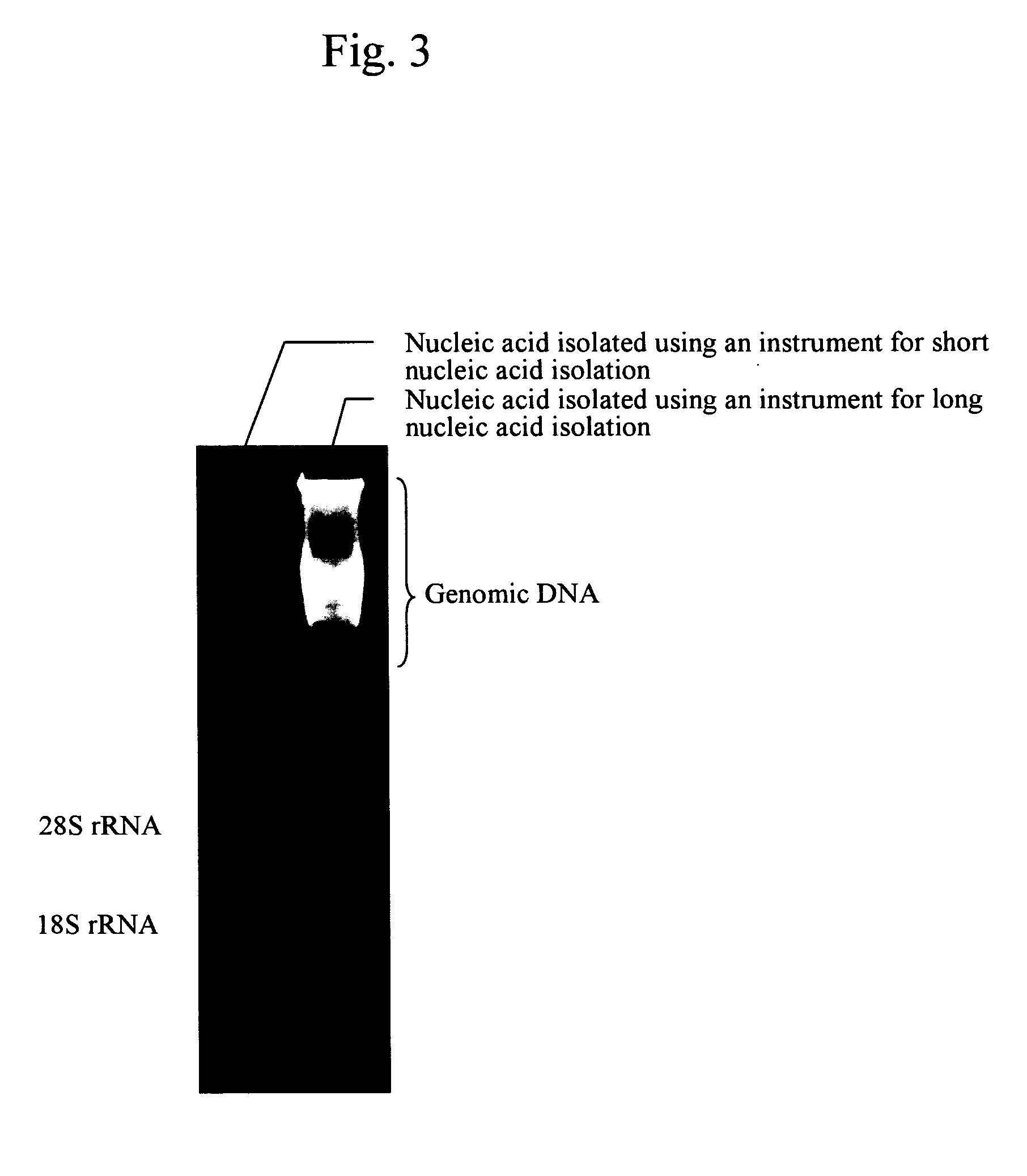Methods for nucleic acid isolation and instruments for nucleic acid isolation
a nucleic acid and instrument technology, applied in the field of methods for nucleic acid isolation and nucleic acid isolation instruments, can solve the problems of insufficient dna and rna isolation, and achieve the effect of efficient isolation, safe and convenient operation
- Summary
- Abstract
- Description
- Claims
- Application Information
AI Technical Summary
Benefits of technology
Problems solved by technology
Method used
Image
Examples
examples
[0048] The present invention is hereafter described in detail with reference to the following examples, although the technical scope of the present invention is not limited thereto.
[A] Samples, Reagents, and Instruments
1. Samples
1.1 Long Nucleic Acid
[0049] Genomic DNA (an isolated product from human blood using QIAamp DNA Blood Mini Kit*) [0050] QIAamp DNA Blood Mini Kit (QIAGEN: genomic DNA having lengths not more than 50 kb (mainly 20-30 kb) are isolated via such kit)
1.2 Short Nucleic Acid
[0051] pBR322 DNA (length: 4361 bp) (MBI Fermentas)
1.3 Biological Sample
[0052] Human blood (with the addition of anticoagulant EDTA-2Na)
2. Reagents
2.1 Red Blood Cell Lysis Reagent
[0053] 155 mM NH4Cl
[0054] 10 mM KHCO3
[0055] 0.1 mM EDTA·2Na
2.2 Chaotropic Reagent A
[0056] 6M guanidine hydrochloride
[0057] 50 mM MES
2.3 Chaotropic Reagent B
[0058] 4M guanidine thiocyanate
[0059] 25 mM sodium citrate (pH 7.5)
[0060] 1% β-mercaptoethanol
2.4 Organic Solvent A
[0061] Ethanol
2.5...
verification experiment 1
[D] Verification Experiment 1
[0076] Genomic DNA was used as a long nucleic acid sample and pBR322 DNA was used as a short nucleic acid sample. In accordance with the aforementioned method for nucleic acid isolation from a nucleic acid solution, nucleic acid isolation was carried out using an instrument for long nucleic acid isolation and an instrument for short nucleic acid isolation. In a binding step, each sample was introduced via an opening of an instrument for nucleic acid isolation and discharged via a passage opening in a one-way direction. In addition, each sample was aspirated and discharged via the passage opening 1, 5, or 10 times.
[0077] The following table shows nucleic acid recovery rates in each of instruments for nucleic acid isolation, nucleic acid samples, and numbers of liquid passage. In addition, FIG. 2 shows relationships between types of liquid passage and nucleic acid recovery rates in each of instruments for nucleic acid isolation and nucleic acid samples. F...
verification experiment 2
[E] Verification Experiment 2
[0080] In accordance with the method for nucleic acid isolation from blood, nucleic acid isolation was carried out using human blood as a biological sample, an instrument for long nucleic acid isolation, and an instrument for short nucleic acid isolation.
[0081]FIG. 3 shows results of electrophoresis of nucleic acids isolated by the instrument for long nucleic acid isolation and nucleic acids isolated by the instrument for short nucleic acid isolation. The nucleic acids isolated by the instrument for long nucleic acid isolation mainly contain genomic DNA; they contain substantially no RNA. Meanwhile, the nucleic acids isolated by the instrument for short nucleic acid isolation mainly contain ribosomal RNA (about 5000 b; 28S rRNA), ribosomal RNA (about 1900 b; 18S rRNA), and messenger RNA; they contain substantially no genomic DNA.
[0082] The results indicate that genomic DNA and total RNA can be efficiently isolated from a biological sample containing ge...
PUM
| Property | Measurement | Unit |
|---|---|---|
| pore sizes | aaaaa | aaaaa |
| pore sizes | aaaaa | aaaaa |
| inner diameter | aaaaa | aaaaa |
Abstract
Description
Claims
Application Information
 Login to View More
Login to View More - R&D
- Intellectual Property
- Life Sciences
- Materials
- Tech Scout
- Unparalleled Data Quality
- Higher Quality Content
- 60% Fewer Hallucinations
Browse by: Latest US Patents, China's latest patents, Technical Efficacy Thesaurus, Application Domain, Technology Topic, Popular Technical Reports.
© 2025 PatSnap. All rights reserved.Legal|Privacy policy|Modern Slavery Act Transparency Statement|Sitemap|About US| Contact US: help@patsnap.com



